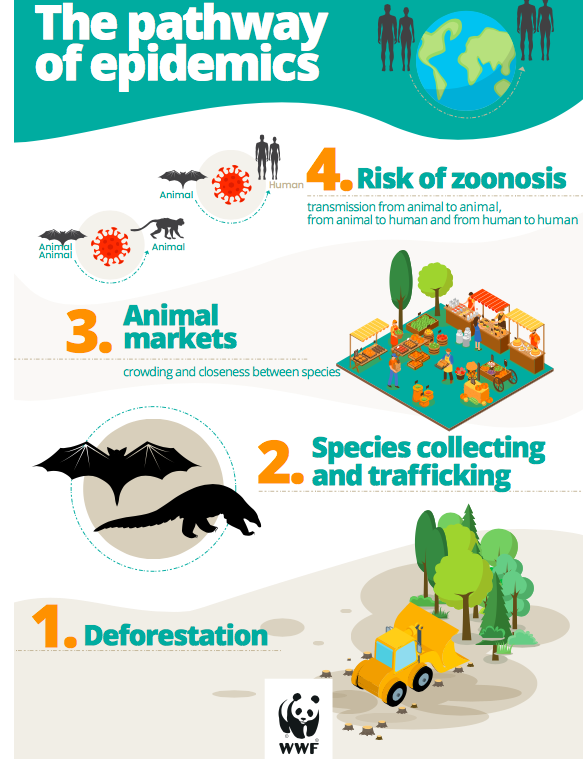In times of CoVID-19, saving lives is of major importance. At the same time we must not forget what caused the virus in first place and how we create resilient social systems to cope but also to reduce the risk of another pandemic. We can develop early-warning systems, create better health care systems and put more funding into developing vaccines. However, we will never be prepared enough to always be able to save all lives. It’s impossible, since we don’t know what vaccines are needed until the virus is here.
What we can do is to restore ecosystems, protect wildlife and minimise human interaction with wild animals. This report from WWF are discussing what risks they see and how we need to consider the role of human-nature interactions!
“Human activities have signicantly altered three-quarters of the land and two-thirds of the ocean, changing the planet to such an extent as to determine the birth of a new era: the “Anthropocene”. Changes in land use that bring wildlife, livestock and humans into closer contact with each other facilitate the spread of diseases, including new strains of bacteria and viruses.”
“While we do not yet have conclusive evidence about the source and path of the SARS- CoV-2 infection, it is highly likely that the origin of this new virus is in part linked to trade of live wild animals and their body parts. This often illegal or uncontrolled practice is a vehicle for spreading old and new zoonoses, increasing the risk of pandemics with enormous health, social and economic impacts.”
“Of all the emerging diseases, zoonoses of wildlife origin represent one of the most significant threats to the health of the world population. Three- quarters of human diseases known to date come from other animals, and 60% of emerging diseases have been transmitted by wild animals.”


